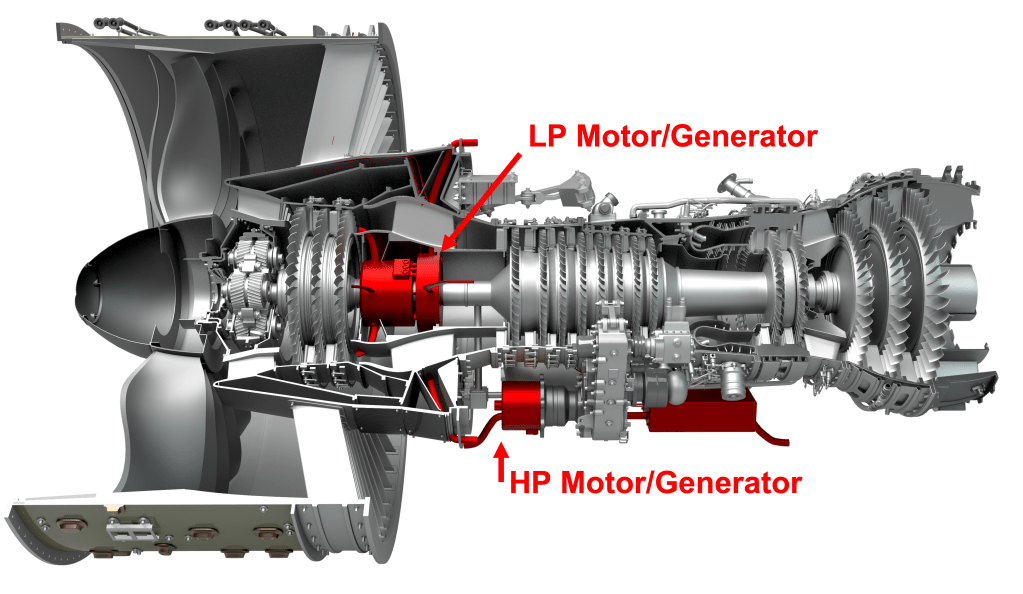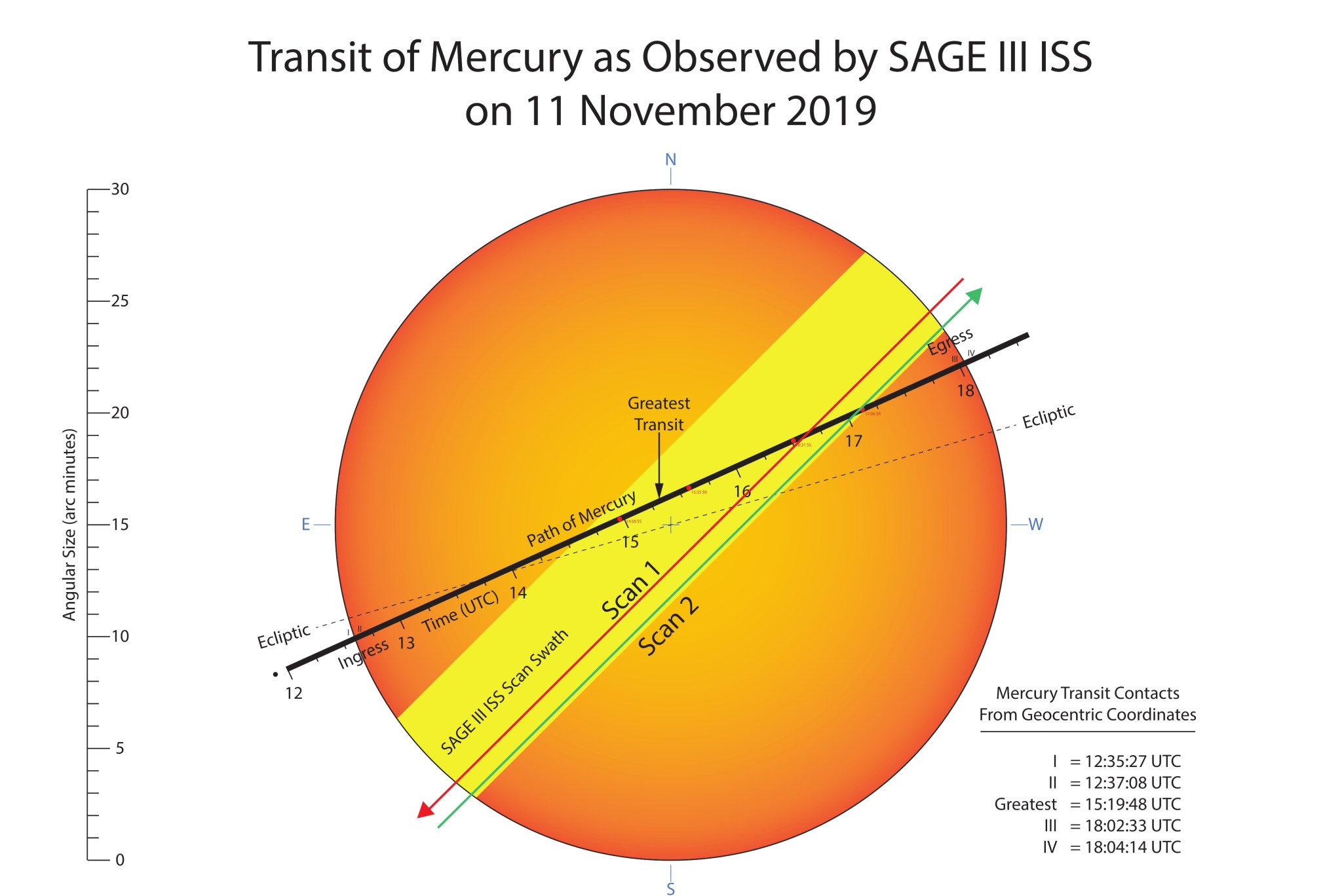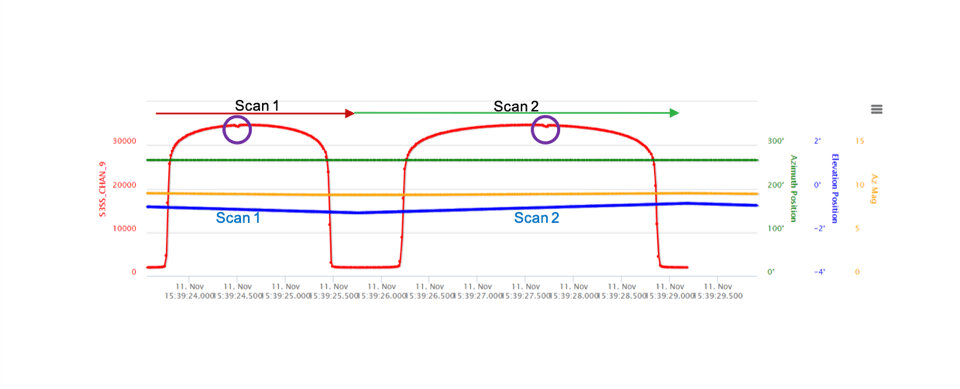SAGE III is a planet finder! (… at least in our immediate neighborhood.) It was able to detect Mercury during its recent transit across the sun.
The Stratospheric Aerosol and Gas Experiment (SAGE) III instrument uses the Sun to collect data on stratospheric ozone, aerosols, water vapor, and other trace gases during sunrise and sunset from orbit on the International Space Station (ISS). These measurements are taken every 46 minutes, on average.
To take measurements, SAGE III uses a technique known as occultation, which involves looking at the light from the Sun (or Moon) as it passes through Earth’s atmosphere at the edge, or limb, of the planet. The space station provides a unique vantage point from which to take those measurements.
A small part of sunrise and sunset events occur outside of the atmosphere (exo-atmospheric) providing a clear view of the solar disk. With the exo-atmospheric scans, SAGE III can clearly detect decreases in the Sun’s photon intensity from sunspots, or as in this case, planets transiting across the Sun. The instrument detected a slight, but noticeable, decrease in the solar intensity at the time of the Mercury transit.
In the graph below, the elevation mirror scans the instrument’s boresight (blue line) across the Sun’s disk, turning around to perform another scan across the disk in the opposite direction. The red curve shows the photon intensity received from one of SAGE III’s sensors. The small decrease in intensity is from the planet Mercury as it blocked the sunlight to SAGE III during its transit across the center of the Sun (purple circles).
Allison Leybold
NASA Langley Research Center































